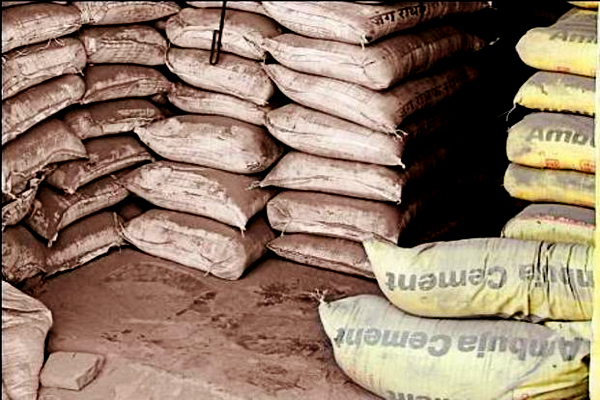The cement industry witnessed its first full year double-digit growth last financial year, after a gap of nine years, as government schemes gave a fillip to rural housing demand.
While the growth has helped the bridge demand-supply gap, a repeat is unlikely in the current financial year, say cement manufacturers and analysts. Since there is no official data collected, companies and rating agencies put cement volume growth in the range of 12 to 13 per cent for 2018-19.
“The industry is in its upcycle with double-digit volume growth for the full year, the first time since FY10,” said the country’s largest cement maker UltraTech, in its latest investor presentation. Full-year volumes for UltraTech alone have grown at 21 per cent, higher than the industry average.
UltraTech’s immediate competitor in cement capacity rankings, Holcim-controlled ACC and Ambuja Cements, however, have failed to keep pace with the industry volume growth.
“What contributed to the double-digit growth is the surge from the South Indian market. Andhra Pradesh and Telangana saw a high demand and Tamil Nadu bounced back as the sand ban was lifted,” said Nitin Bhasin, head of research, institutional equities, at Ambit Capital.
“In East India, rural housing demand was high, pushed by the government’s housing subsidy schemes.” Growth in the South India market has reflected in volume rise for companies like Ramco Cement, which registered a 19 per cent growth in full year cement volumes.
For companies like JK Lakshmi, the growth in volumes has helped report a 36 per cent jump in net profit to Rs 44.40 crore for the March 2019 quarter. “Volume growth has helped negate the cost rise, when prices have been weak and hence helped profitability,” said Shailendra Chouksey, whole-time director at JK Lakshmi.
However, two major cement producers – ACC and Ambuja Cements – have so far been unable to capitalise on this demand growth. For the March quarter, Ambuja reported a 2.4 per cent growth in volumes and six per cent for the full year. In the March quarter, ACC reported a 5 per cent growth in March 2019 volumes and eight per cent volume growth for the full year.
The trend, however, is not expected to continue for the current financial year. Analysts and cement manufacturers point out demand for April-May 2019 has been weak. The first quarter of the financial year is typically a strong demand period for the cement sector. Lok Sabha elections and the model code of conduct, however, slowed down construction activity and hence demand.
Sabyasachi Majumdar, group head, corporate ratings at ICRA, expects cement volumes to grow at 7 to 8 per cent in the current financial year. “We believe rural housing and most of it coming from the Pradhan Mantri Grameen Vikas Yojana contributed to this growth. It looks unlikely that the double-digit trend will continue in FY20.”
The revival in demand seen in the last financial year has also led to narrowing down of demand-supply mismatch in the industry. Industry estimates peg FY19’s effective capacity at 452 million tonnes (MT). With exports of 5 MT and an estimated domestic demand of 312 MT, the cement surplus for FY19 was at 135 MT, or 30 per cent of the effective capacity. The surplus figure was 156 MT or 36 per cent of the capacity in 2018.
Source:BS
Image Courtesy: LM
You may also like
-
Trade Connect E-platform For Exports Is Single Window, Fast, Accessible And Transformational: Shri Piyush Goyal
-
Dot Simplifies Approval Processes For Telecom Licenses And Wireless Equipment
-
Coal Production and Supply Trends on Positive Trajectory
-
Union Minister To Release Booklets On Promotion Of Indigenous Species & Conservation Of States Fishes
-
2nd India-Japan Finance Dialogue held in Tokyo on 6th September, 2024
